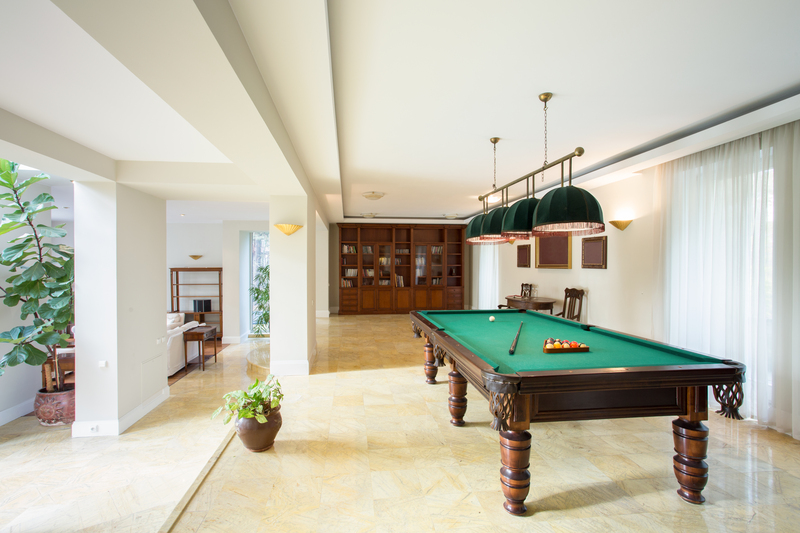Maintaining Tune and Integrity: How Pros Handle Pianos in Transit
Transporting a piano is more than just moving a piece of furniture--it's about preserving a delicate instrument's tune, structure, and value. When it comes to maintaining tune and integrity, professional movers use precise strategies and specialized tools to ensure each component of the piano arrives at its destination in perfect condition. Whether you're considering a local move or a long-distance relocation, understanding how pros handle pianos in transit is essential for any owner.

Understanding the Complexity of Piano Transportation
A piano isn't just heavy; it's a complex blend of wood, metal, and felt, consisting of more than 10,000 moving parts. Each piece collaborates to create its distinctive sound, but also introduces risks during transport. Unfavorable temperature fluctuations, vibrations, improper handling, or inadequate packaging can threaten both the tuning stability and the overall structural integrity of the piano.
- Weight Distribution: Upright pianos can weigh 300 to 500 pounds, while grand pianos can exceed 1,200 pounds.
- Fragility: Delicate inner parts--like the soundboard, hammers, and keys--are susceptible to misalignment or breakage.
- Tuning Sensitivity: Even minor bumps or temperature changes can disrupt the fine balance, requiring retuning.
When considering how experts move pianos, the mantra is clear: Prevent damage, preserve the sound.
Piano Moving Preparation: Setting the Stage for a Successful Move
Initial Assessment and Planning
Before any physical movement, professionals conduct a detailed assessment. This step encompasses more than merely measuring doorways:
- Type and Size: Evaluating whether the instrument is an upright, baby grand, or concert grand determines equipment and manpower needs.
- Pathway Analysis: Mapping out the safest route, identifying narrow passages, tight corners, or obstacles, and making necessary arrangements for elevator or stairway access.
- Climate Considerations: Ensuring appropriate wrapping procedures if the move involves exposure to extreme heat, cold, humidity, or sudden changes in weather.
Protective Packing and Wrapping
Every professional piano transport begins with protective padding. Here's how experts safeguard the tune and structure:
- Disassembly of Removable Parts: Detaching pedals, legs, music stands, lids, and lyres for grand pianos limits leverage points and reduces breakage risk.
- Padding and Wrapping: Employing multiple layers of felt blankets, moving pads, and industrial-strength stretch wrap shields the finish and insulates against minor jolts.
- Securing the Keyboard Lid: Firmly closing and locking the lid prevents key damage during handling or transport.
It's vital to underline here: Quality packing is the frontline defense in maintaining piano tuning and integrity during a move.
Moving Techniques: Professional Equipment and Best Practices
Specialized Moving Equipment
Moving a piano safely calls for more than muscle; it requires precision equipment, including:
- Piano Dollies: Sturdy platforms with heavy-duty wheels designed specifically for upright and grand pianos.
- Piano Boards (Skid Boards): For grand pianos, the instrument is gently tilted and secured to a padded, reinforced board.
- Ramps and Lifts: When stairs or high curbs are involved, pros employ ramps or hydraulic lifts to avoid jarring impacts.
- Straps and Harnesses: Secure anchoring systems distribute weight and help handlers maintain control, vital for maintaining piano integrity.
Safe Handling Techniques
Professional movers are trained in methods to protect both the piano and their own safety:
- Team Coordination: Multiple movers work cohesively, maintaining clear communication to anticipate and avoid sudden movements.
- Body Mechanics: Adhering to proper lifting techniques--using legs, not the back--prevents injuries and minimizes shakes that could impact tuning stability.
- Constant Monitoring: The instrument is checked at every step for shifting or untied wrappings.
Experienced movers know that a moment's lapse in attention can result in irreparable damage to the intricate inner workings that give a piano its voice.
Securing in the Moving Vehicle: Guarding Tune and Structure in Transit
Professional Loading Methods
The way pianos are loaded into moving vans or trucks is critical to keeping them in tune and intact:
- Placing Upright Pianos: Always upright, never on their sides or backs, on the wall of the truck, and strapped securely.
- Grand Pianos: Resting on their curved side on the skid board and belted down at multiple points.
- Space Management: Ensuring the piano does not shift during transport by using padding, braces, and strategic packing of other items.
Professional piano transport teams often dedicate an entire section of the moving truck exclusively to the instrument, minimizing contact with other heavy items and potential sources of vibration.
Climate Control Considerations
Uncontrolled environments can wreak havoc on quality pianos. Here's how experts address climate concerns:
- Temperature Regulation: Whenever possible, vehicles are climate-controlled to prevent the wood from swelling, shrinking, or cracking.
- Humidity Management: Dehumidifiers or silica gel packets may be used to keep moisture at bay, crucial for maintaining tuning and sound quality.
Arrival and Reassembly: Restoring Tune and Ensuring Integrity
Careful Unloading and Placement
Just as at the beginning, the end of the journey demands expert attention. Pros know the piano's final location should support its acoustics and long-term health:
- Level Placement: Ensuring the piano sits perfectly level, protecting the action and helping with long-term tuning stability.
- Climate Assessment: Avoiding sun-drenched, drafty, or damp areas that could destabilize the instrument's tuning.
- Unwrapping: Carefully removing packaging to avoid surface scratches or accidental drops.
- Reassembling Components: Expertly reinstalling pedals, legs, and other detached parts.
Post-Move Inspection and Tuning
Maintaining piano tuning and structural integrity doesn't stop the moment the moving team leaves. A thorough inspection is performed:
- Visual Inspection: Checking for cracks, loose hardware, or any signs of impact damage.
- Professional Tuning: A qualified piano tuner is often scheduled within a week, once the instrument acclimates to its new environment. This restores pitch stability and addresses any issues that minor shocks may have caused during transit.
- Humidity Monitoring: Reevaluating humidity and temperature to maintain optimal piano health long-term.
How Pros Ensure Piano Tuning Integrity During Transit
Tips and Insights from Industry Experts
- Plan and Prepare: Thorough preparation ensures expert movers avoid surprises that could jeopardize the instrument's tuning or structural soundness.
- Use Quality Equipment: Always employ professional-grade dollies, straps, padding, and climate control.
- Limit Movement: Reduce bumpy rides, sudden stops, or excessive tilting that can throw the instrument out of tune.
- Communicate: Keep open lines with clients about scheduling, delivery, and post-move care.
Well-maintained and properly handled pianos often suffer minimal tuning loss, which can be restored swiftly with a professional tuning session.
Common Mistakes in Piano Moving and How Pros Avoid Them
- Skipping the Planning Phase: Pros always evaluate every aspect of the move, from stairs to climate, ahead of time.
- Improper Lifting: Utilizing the wrong lifting techniques or too few helpers can cause warped frames or broken legs.
- Neglecting Padding: Inadequate wrapping is a leading cause of scratches, dents, and even soft-pedal damage.
- Ignoring Environmental Factors: Pros watch weather forecasts and maintain controlled environments whenever possible.
Avoiding these errors is central to protecting piano tune and integrity throughout every stage of transportation.
Why Hire Professional Piano Movers?
- Experience and Training: Specialists know how to disassemble, lift, transport, and reassemble pianos without compromising their structure or tone.
- Insurance Coverage: Reputable movers protect your investment against unforeseen events, offering peace of mind.
- Specialized Equipment: Only the right tools can keep a piano's delicate internal parts safe in transit.
- Time and Effort Savings: What could take an amateur hours--or days--is completed efficiently by expert teams.
When choosing a mover, look for those with specific piano moving experience, positive reviews, and proper insurance.

Extra Specialist Services for Ultimate Care
- Climate-Controlled Storage: If immediate placement isn't possible, pros offer short or long-term storage designed for sensitive instruments.
- Piano Crating: For international moves, customized wooden crates provide maximum protection against shocks and environmental changes.
- Post-Move Tuning and Regulation: Some moving companies coordinate expert technicians to retune and adjust your instrument after transit, ensuring your piano is performance-ready.
Conclusion: Trust the Pros with Maintaining Piano Tune and Integrity During Transit
Moving a piano isn't a DIY project--it's a specialized art form requiring knowledge, precision, and the right equipment. From detailed planning and expert wrapping to cautious lifting, secured transit, and thoughtful placement in your new home, every step is designed to maintain your piano's tune and structural integrity during transit. Only professionals truly understand the nuances that keep your cherished instrument safe, resonant, and ready for beautiful music. If your piano matters, entrust it to those who treat it with the care and expertise it deserves.
Looking for more advice? Connect with accredited piano movers in your city for a quote and enjoy enduring performance from your remarkable instrument--no matter the journey.



